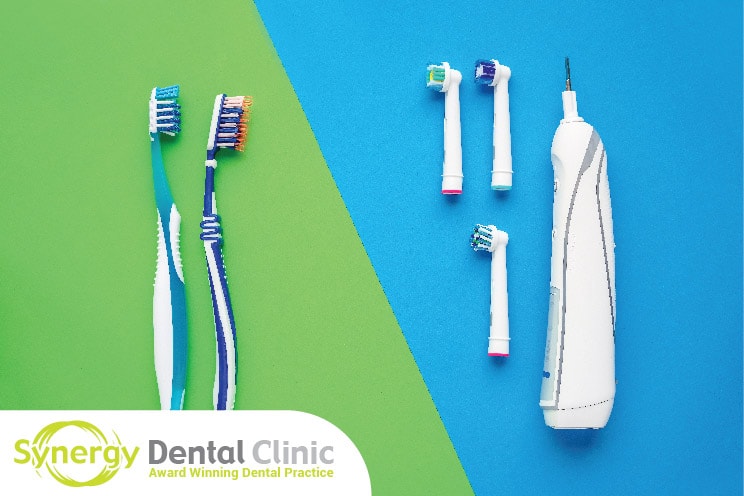Tooth brushing is a vital part of your daily dental hygiene routine. By preventing the build-up of plaque, toothbrushing can help you avoid the onset of a number of gum and tooth problems including tooth decay, gum disease, and infection.
The benefits of toothbrushing
Brushing your teeth removes food debris, bacteria, and plaque from the surface of your teeth and the gaps under the gumline.
The build-up of bacteria in these areas can lead to a number of dental problems, which is why it is vital to get your brush into as many gaps and spaces as possible.
This removal of debris and bacteria will also affect your breath, which can become filled with bad-smelling gases if bacteria are allowed to build up.
How to brush your teeth
• Place the head of the toothbrush against the surface of your teeth and lean the bristles at a 45-degree angle against the gum line.
Begin moving the brush in small, circular movements on each surface. Make sure each surface receives several brushes before you move on.
• Brush the outer surfaces of every tooth on both your upper and lower jaw, ensuring that the bristles remain angled against the gumline
• Brush inside the mouth, ensuring that you repeat the motion on each chewing and biting surface
• When cleaning the inside surfaces of the front teeth, lean the brush vertically and make small, circular motions with the front part of the brush
• Brush your tongue lightly to freshen your breath and remove bacteria
Electric or manual?
Both electric and manual toothbrushes can achieve the same results provided they are used correctly. Some find it easier to brush with electric toothbrushes, which are also designed to fit into the mouth with ease.
However, a manual toothbrush does provide more control and can allow the user to reach further into the mouth without causing injury.
Toothpaste
There are a number of different types of toothpaste available, most of which contain fluoride. Advocated by the British Dental Health Foundation, fluoride toothpaste helps prevent cavities and control the decay of teeth.
It is particularly useful during the development of adult teeth as it strengthens growing enamel and increases protection.
It is important that each individual in a household is using the correct amount of fluoride in their toothpaste in order to prevent fluorosis. This is the process of excessive fluoride causing discolouration and flecks in teeth due to an overexposure to fluoride.
It is also important to use enough fluoride in order to protect the teeth.
The correct amount for each age group is:
• A smear of toothpaste containing no less that 1,000ppm (parts per million) of fluoride for children under three
• A pea-sized amount of toothpaste containing 1,350-1,500pppm fluoride for children aged three to six
• Toothpaste containing at least 1,450ppm fluoride for adults

